LG M3 vs LG M4: Wireless OLED TV Compared
By Naila Syifa
Updated March 2024

At CES 2024, LG announced the release of the LG M4 OLED TV, an improved version of the LG M3 OLED TV, which was claimed previously by LG as the "world's first wireless OLED TV" when it was first released in 2023.
The full specifications and features of the M4 are not yet available to the public, but LG promises significant upgrades and improvements over the M3. In this article, we'll compare both wireless OLED TVs based on what we know about the M4 so far.
Key Takeaways
What sets the M4 apart from the M3 is its new Alpha 11 AI Processor that powers better picture, audio, and gaming performance than the Alpha 9 chip in the M3. The M4 also adds new Matter support, offers 4-screen MultiView instead of 2, and the new webOS 24.


LG Signature OLED M3
World’s First Wireless OLED TV
✓ 4K Resolution & 120 Hz Refresh Rate
✓ α9 AI Processor Gen6
✓ MLA, Dolby Vision, Dolby Atmos
✓ Virtual 9.1.2 Up-mix

LG Signature OLED M4
Upgraded Wireless OLED TV
✓ 4K Resolution & 120 Hz Refresh Rate
✓ α11 AI Processor 4K
✓ MLA, Dolby Vision, Dolby Atmos
✓ Virtual 11.1.2 Up-mix
#1 Price

LG M4
The Signature M series is the flagship line of OLED TVs from LG, thus the price for both LG M3 and M4 are quite expensive and may not be attainable for everyone. The price for the M3 model starts at around $4,800 for its 77-inch size and goes up to $25,000 for its 99-inch size.
The price for the M4 is yet to be announced, but considering its upgrades and improvements, the M4 model is expected to be even more costly compared to the M3. However, LG offers a new smaller 65-inch size for the M4 model, which hopefully can make it more accessible for those who want a wireless OLED TV but have a smaller budget.
#2 Design

Zero Connect Box
Just like most other LG OLED TVs, the M3 and M4 models have a sleek and modern design with ultra-thin bezels and a slim profile that make them look great in any living room. When not in use, you can display art or photos on the TV screen, making the TV look like a piece of artwork on the wall.
What sets the M3 and M4 apart from the other LG OLED TVs is its revolutionary wireless design. Using the Zero Connect Box placed up to 30 feet away, you can connect all your devices wirelessly to the TV without the need for any visible wires or cables. However, keep in mind that the TV is still not completely wireless, as it still needs a power cord to function.
The Zero Connect Box features 3 HDMI and 2 USB ports, which you can use to connect various devices including a Blu-ray player, gaming console, set-top box, or any other compatible device. You don't have to worry as the picture and sound quality is not compromised by the wireless design, as the signals are sent through a high-speed wireless connection with low latency and high bandwidth, making it a great choice for those who want a clean and clutter-free living room setup.
#3 Picture Quality

LG M3
As the flagship line of LG's wireless OLED TVs, both the M3 and M4 models offer exceptional picture quality with deep blacks, vibrant colors, and excellent contrast. Powered by Micro Lens Array (MLA) technology, which is currently the brightest OLED TV panel from LG, both models are the brightest OLED TVs that LG has to offer right now, with a brightness level 150% higher than the entry-level LG B4.
The recently released LG G4 also offers the MLA technology, allegedly offering an equally stunning picture quality to that of the M4, but with a lower price point.
Read also: LG G4 vs LG M4: High-End OLED TVs Compared

Alpha 11 AI Processor 4K
What sets the M4 apart from its predecessor M3 is the new Alpha 11 AI Processor 4K it offers, which is expected to deliver even better image processing and upscaling capabilities, resulting in an even more immersive and lifelike viewing experience. With this chipset, LG promises a 70% upgrade in graphics performance and 30% faster processing speed compared to the last generation.
The LG M3, on the other hand, offers the Alpha 9 Gen 6 AI Processor, which is still a powerful processor, but not as advanced as the Alpha 11 processor that comes with the M4. However, keep in mind that this Alpha 9 Gen 6 AI Processor is the same processor that powers other LG's OLED TVs, including the more affordable LG G3 and the LG C3. That means, instead of splurging on the expensive M3 model, you can get a similar high-quality picture performance with the LG G3 and C3 at a more affordable price point.
Read also:
LG G3 vs LG G4 OLED TV
LG C3 vs LG C4 OLED TV
#4 Sound Quality

LG M3
With the new Alpha 11 AI Processor, the M4 can now up-mix stereo content into virtual 11.1.2 surround sound, giving a more immersive audio experience right from the TV's built-in speakers. The M3, on the other hand, supports only virtual 9.1.2 surround sound, which is still a great audio experience, but not as advanced as the M4's 11.1.2 surround sound.
LG also claims that the Alpha 11 AI Processor in the M4 helps to produce "richer and fuller audio", though a slight improvement in audio quality may not be noticeable to most viewers. We will have to wait for reviews and tests to confirm this claim.
#5 Smart Features

LG M3
LG M3 comes with a range of smart features, including voice control, intelligent voice recognition, ThinQ AI, a full web browser, sports alert, compatibility with Amazon Alexa, Apple Home, Hey Google, Apple Airplay 2, and many other smart features.
The M4 will retain these smart features and add even more advanced features and capabilities, such as the new Matter support. Matter is a new smart home connectivity standard that allows devices from different brands to work together seamlessly. With Matter support, the M4 can now serve as a hub to control different smart devices in your home that support the standard.
Another improvement that the M4 offers is the new webOS 24 which replaces last year's webOS 23 that comes with the M3. The new webOS 24 allows the creation of up to 10 different user profiles, has a nicer design, and promises five-year upgrades so your TV is futureproofed for a long time to come. You can also now split the TV screen into 4 different content, an upgrade from the M3's 2-way MultiView feature.
#6 Gaming Support

LG M3 vs LG M4
In addition to its comprehensive smart features, the LG M3 and M4 also offer a range of features that make them great for gaming. The LG Game Dashboard, Game Optimizer, Auto Low Latency Mode (ALLM), Variable Refresh Rate (VRR), NVIDIA G-Sync, and AMD FreeSync Premium are all available on both models to ensure smooth and responsive gameplay.
The new Alpha 11 AI Processor in the M4 allows a maximum refresh rate of 144Hz, which is an improvement over the M3's 120Hz. However, current gaming consoles only support up to 120Hz, so the M4's 144Hz refresh rate can only be fully utilized if you have a premium gaming PC with a 144Hz graphic card.
LG M3 vs LG M4 OLED TV
Final Thoughts

LG M4
Overall, the LG M4 is a significant upgrade over the M3 with its new Alpha 11 AI Processor, Matter support, 4-screen MultiView, and new webOS 24. While the M4 is expected to be even more expensive than the already pricey M3, the new smaller 65-inch size may make it more accessible to those with a smaller budget.
With exceptional picture quality, immersive audio, comprehensive smart features, gaming support, and most notably, the revolutionary wireless design, the LG M3 and M4 are some of the best OLED TVs available in the market today.
If you like to read more about Smart TVs, check out our other relevant guides here:
5 Things to Know About LG's 2024 OLED TVs Lineup
LG B3 vs B4: Entry-Level OLED TV Gets Better
LG B4 vs C4: 6 Differences
LG C4 vs G4: 6 Key Aspects
Don't miss out on tech
Subscribe to our newsletter to stay up to date on the latest tech trends and guides on the best gadgets around.



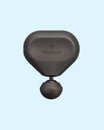

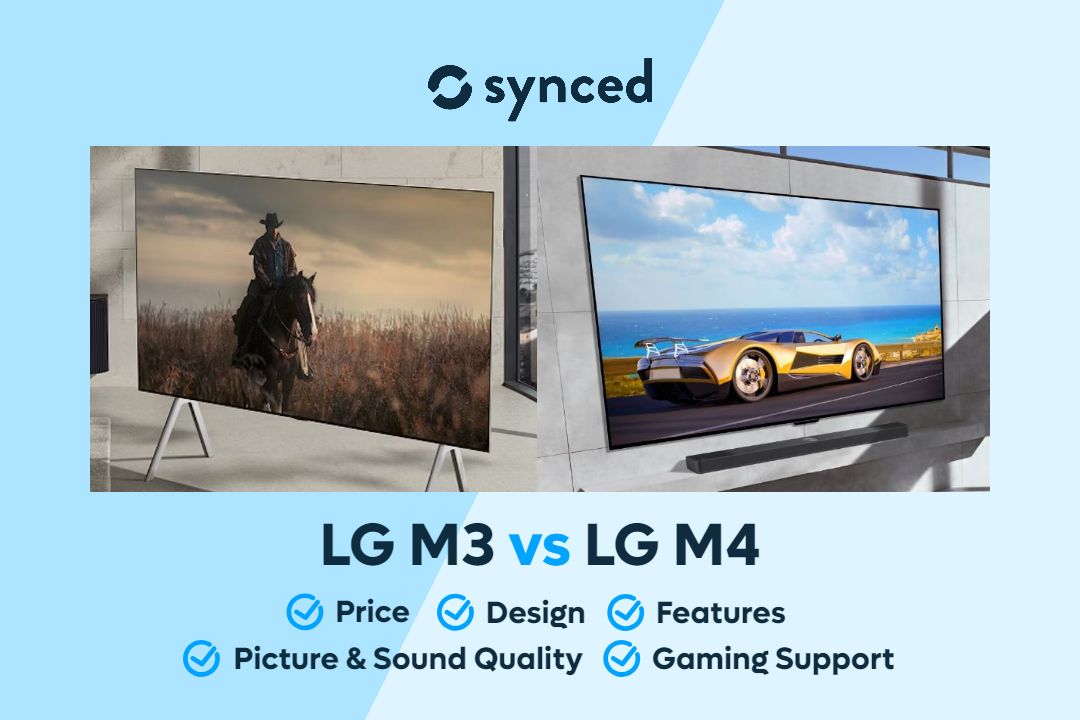
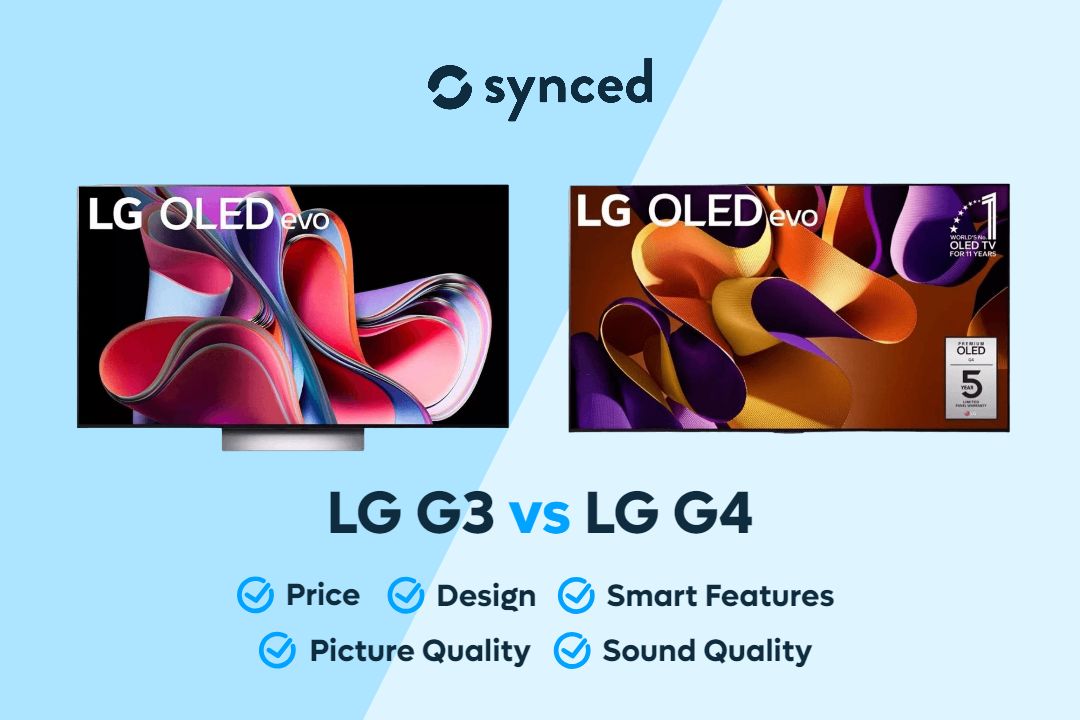
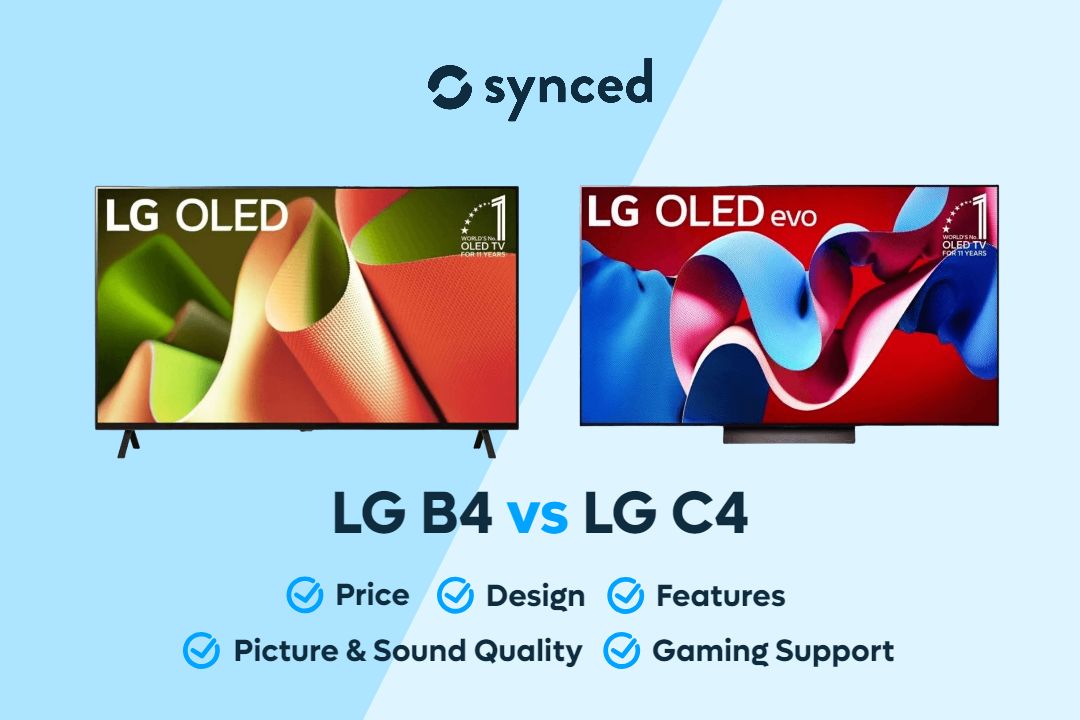
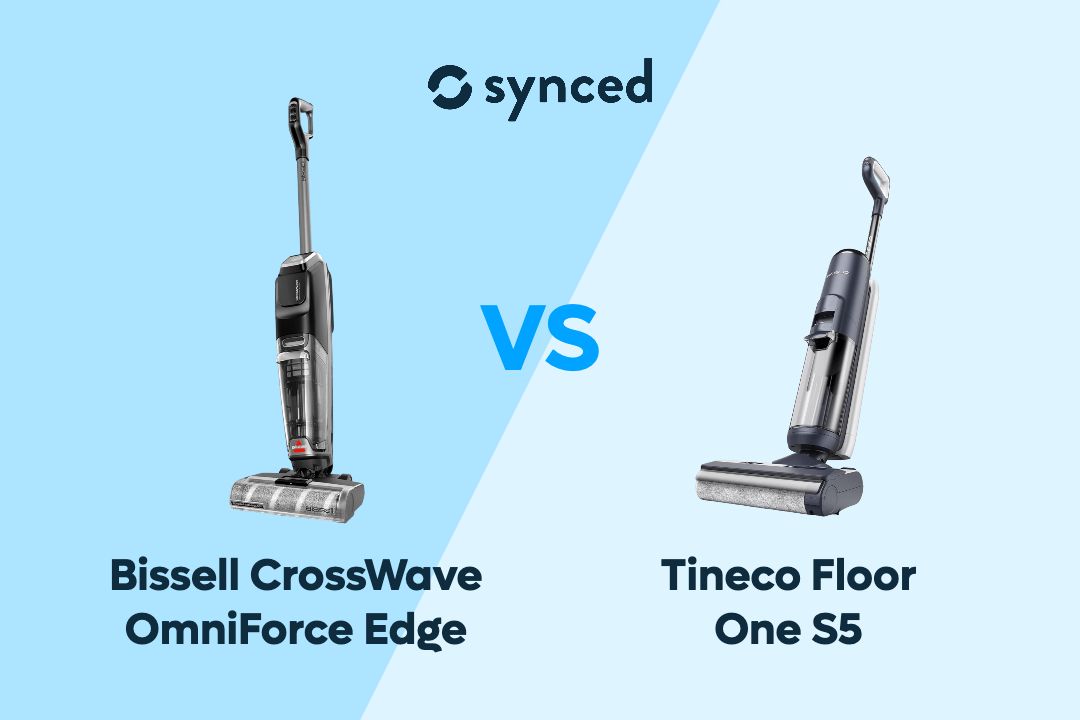
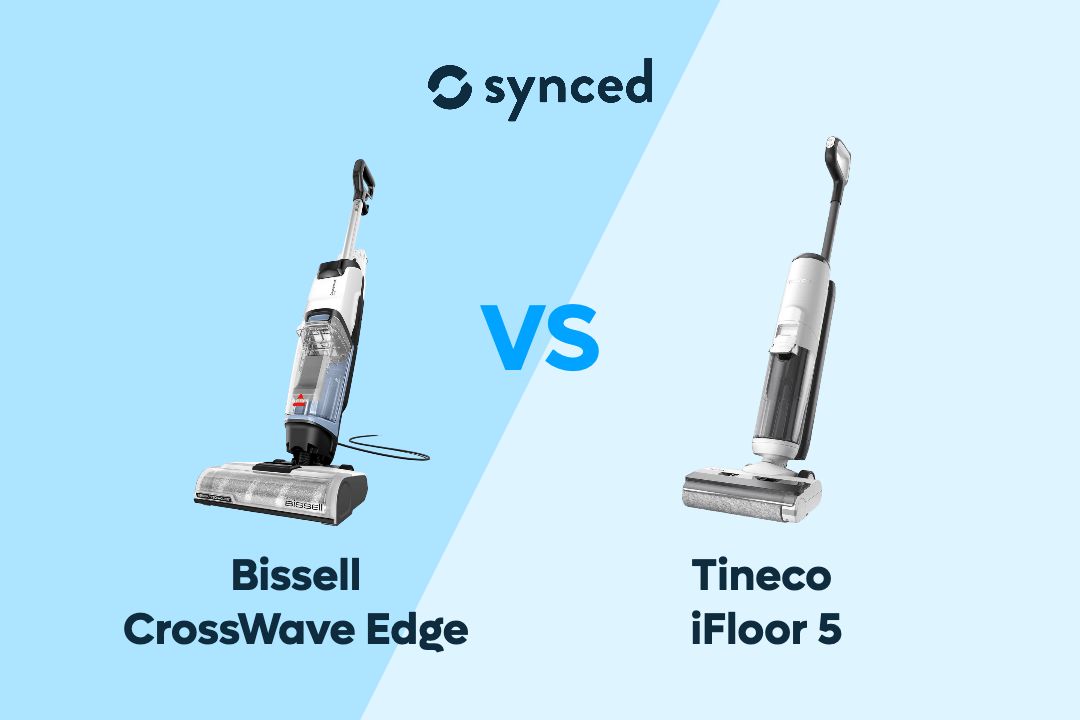
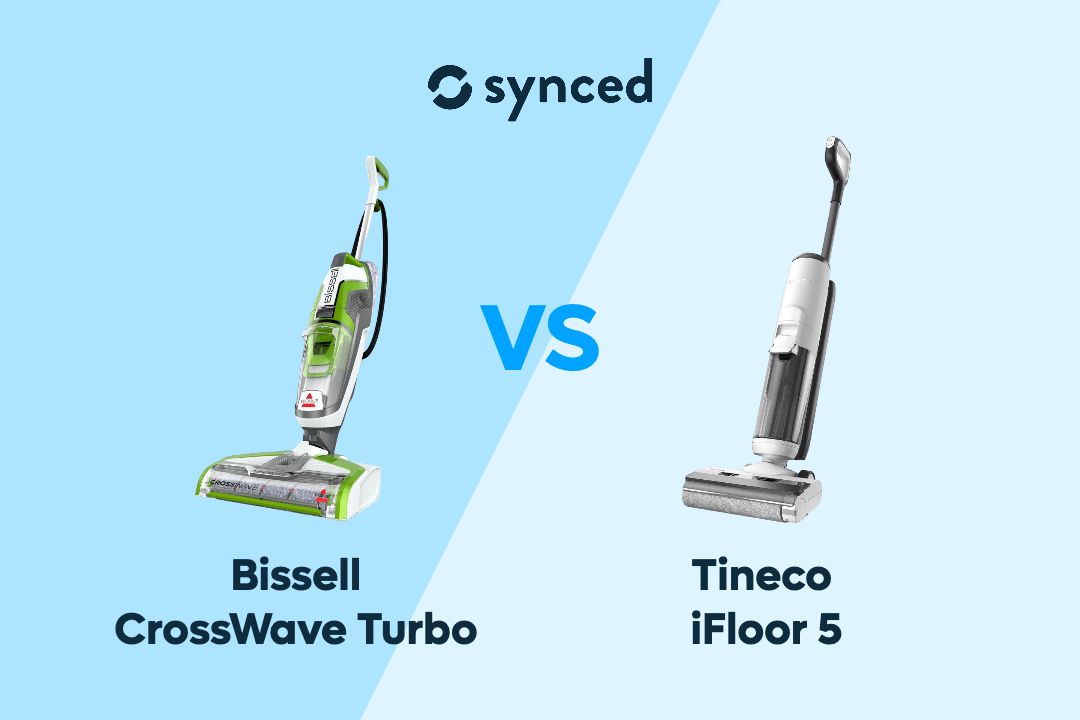
Leave a comment
This site is protected by hCaptcha and the hCaptcha Privacy Policy and Terms of Service apply.